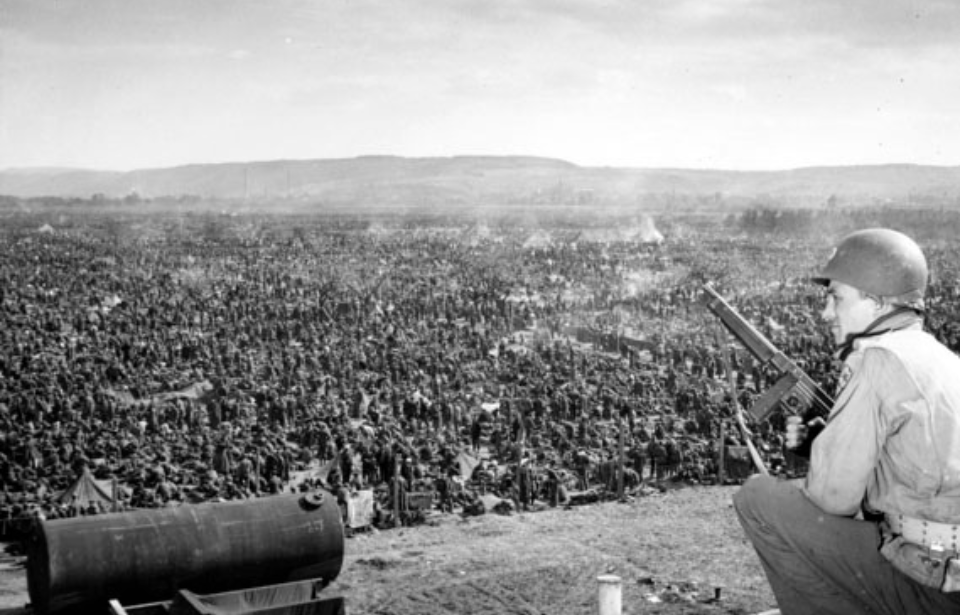During World War II, many prisoners of war (POWs) were captured. The Geneva Convention specified the standards of care they should receive. However, POWs held in camps within Allied-occupied Germany were deliberately categorized differently to avoid these standards. These camps, referred to as the Rheinwiesenlager and formally known as Prisoner of War Temporary Enclosures (PWTE), are rarely discussed.
Allied success in Europe following the D-Day landings
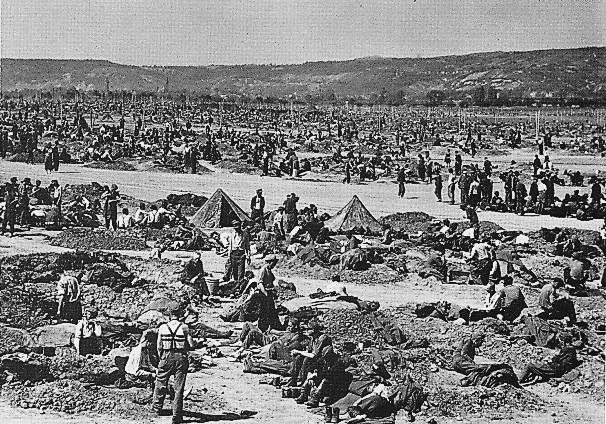
Following the remarkable triumph of the D-Day landings, the Allies advanced through occupied countries and into Germany. Although some enemy soldiers continued fighting, many surrendered, leaving the Allied forces responsible for their care.
At first, the prisoners were divided between the British and Americans, but in early 1945, the British refused to accept any more individuals into their existing camps. This shift placed the responsibility on the Americans, who faced the significant challenge of accommodating the growing number of German POWs as the Allies moved deeper into the country.
To address this situation, the US Army established the Rheinwiesenlager, a network of prison camps spread across Allied-occupied Germany. Although they began operating in April 1945, these camps became even more vital after Germany’s surrender the next month, as they helped prevent a potential uprising against the Allies.
Layout of the Rheinwiesenlager
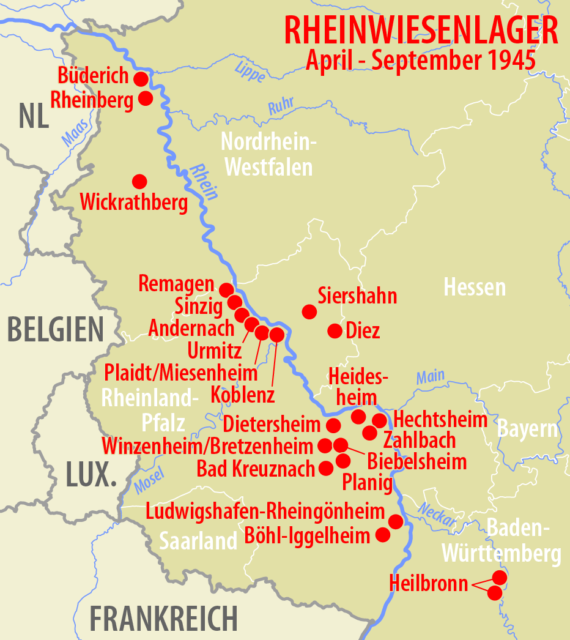
The Rheinwiesenlager were constructed on land under Allied control in West Germany. These camps were established on farmland near rail lines, with barbed wire enclosing the designated areas. The land was divided into smaller camps, each intended to hold 5,000-10,000 people. However, many of the camps ended up accommodating over 100,000 prisoners, with overall estimates ranging from one to 1.9 million.
The individuals held at the Rheinwiesenlager were primarily ordinary members of the Wehrmacht, while German officers, SS members, and other significant individuals were relocated elsewhere.
Much of the internal organization of the camps was delegated to the prisoners, who had to handle their own tasks such as work, medical care, and cooking. Frequently, the guards overseeing the enclosures were fellow prisoners who were offered additional resources to maintain control and ensure others stayed within the barbed wire fences.
The compounds contained buildings mostly used as kitchens, medical facilities, and for administrative functions, but they were not used to house the prisoners. Instead of living in structures, most prisoners were forced to dig holes in the ground for shelter.
Disarmed Enemy Forces (DEFs)
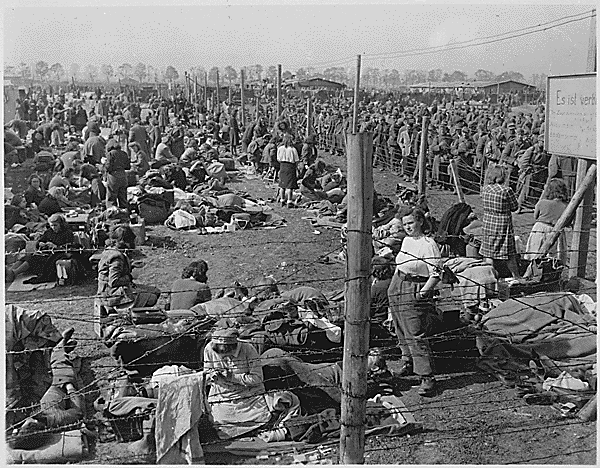
The poor conditions endured by these prisoners, shown even in their makeshift outdoor lodgings, underscored the harsh treatment given out by their captors. This mistreatment was largely allowed by their classification not as prisoners of war (POWs), but as Disarmed Enemy Forces (DEFs).
Before the opening of the Rheinwiesenlager, Gen. Dwight D. Eisenhower introduced this new classification, which effectively deprived DEFs of the protections afforded to POWs by the Geneva Convention on Prisoners of War (1929), on the grounds that they were members of state that no longer existed. This allowed for many forms of mistreatment
Under this classification, American authorities could “legally” prevent the Red Cross from visiting and stop the delivery of humanitarian aid. The Geneva Convention was specifically crafted to prevent the abuse of POWs, yet without its safeguards, DEFs were subjected to mistreatment with little to no repercussions for their captors.
These circumstances have led many to now view the inhumane actions of Eisenhower and those overseeing the Rheinwiesenlager as deliberate.
Rheinwiesenlager conditions
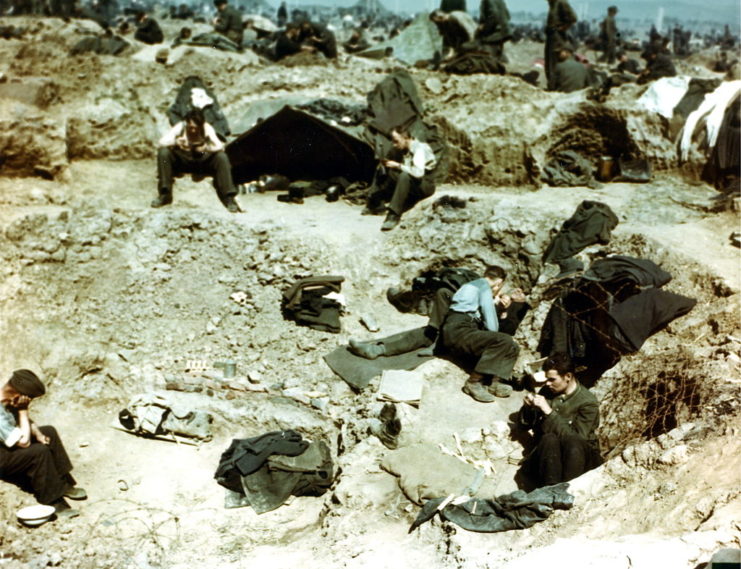
Overall, the conditions in the Rheinwiesenlager were horrific.
Historian Stephen Ambrose investigated many claims made about the camps, and concluded, “Men were beaten, denied water, forced to live in open camps without shelter, given inadequate food rations and inadequate medical care. Their mail was withheld. In some cases prisoners made a ‘soup’ of water and grass in order to deal with their hunger.”
Begging for more food wasn’t an option either, as those prisoners were often shot as “escapees,” should they have gotten near the barbed wire fences. Reports also claim locals would be shot if they tried to provide aid to the POWs.
Legacy of the Rheinwiesenlager
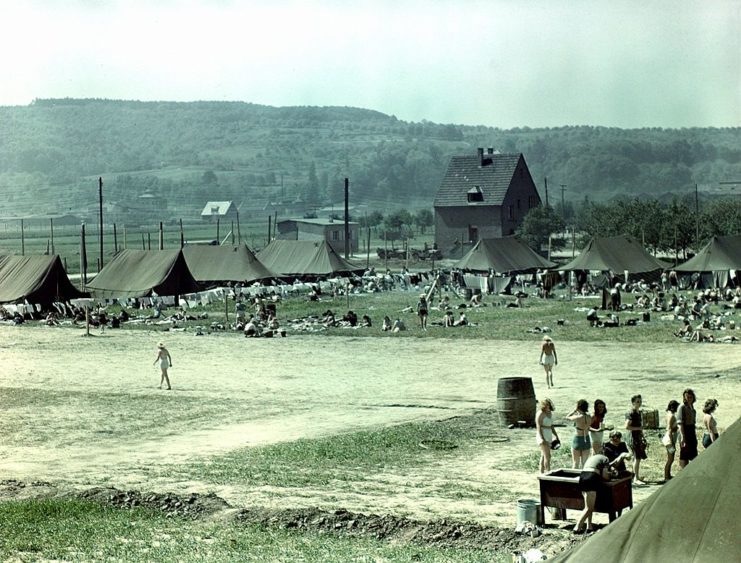
Given the living conditions of the Disarmed Enemy Forces, it’s no wonder the death toll was high. However, because they weren’t officially known as prisoners of war, few records were kept. Instead, many Germans would simply go missing from roll call, never to be seen again.
Due to the lack of records, death estimates vary, depending on who you ask. The official statistics from the US Army state that around 3,000 people died while in the Rheinwiesenlager. German estimates, however, provide a figure of 4,537.
James Bacque, the author of Other Losses: An Investigation Into the Mass Deaths of German Prisoners at the Hands of the French and Americans After World War II, alleges the number is between 100,000 and one million. However, his claims have been discredited by his peers.
More from us: The Battle of Cologne Saw a Legendary Standoff Between a Panther and a Pershing
Regardless of the overall death toll, the treatment of DEFs has been heavily criticized, despite it going largely unnoticed in more recent years. Many have pointed out that the Americans violated a host of international laws on the treatment of prisoners, even though they weren’t classified as POWs, particularly in their feeding – or lack thereof.
